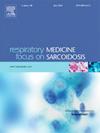无创呼吸支持对成人吞咽生理、气道保护和呼吸-吞咽模式的影响:系统综述。
IF 3.5
3区 医学
Q2 CARDIAC & CARDIOVASCULAR SYSTEMS
引用次数: 0
摘要
目的:近年来,无创呼吸支持--即通过鼻插管输送高流量氧气(HFNC)、持续气道正压(CPAP)和无创通气(NIV)--的使用不断扩大。人们对这些支持方式的生理机制普遍都有很好的了解。相比之下,对吞咽运动的感觉运动机制以及呼吸和吞咽协调(气道保护和药栓清除的关键因素)的影响仍不清楚。本系统性综述的目的是评估无创呼吸支持对成人吞咽机制、气道保护和呼吸-吞咽模式影响的现有证据:使用预先确定的术语检索了六个数据库(PubMed、EMBASE、Web of Science、Scopus、CINAHL 和 ProQuest Dissertations & Theses)。纳入标准为1)成人 2)使用无创呼吸支持;3)吞咽评估:我们共筛选出 8727 篇文章,其中 15 篇符合纳入标准。6 项研究评估了健康成人的无创呼吸支持,9 项研究评估了患有不同呼吸系统疾病的参与者,包括慢性阻塞性肺病 (COPD)、阻塞性睡眠呼吸暂停 (OSA)、急性呼吸衰竭以及神经肌肉疾病导致的慢性呼吸衰竭。采用改良的 NIH 质量评估工具对偏倚风险进行了评估。在健康成人中,结果表明高频数控和 CPAP 对吞咽功能、气道保护和呼吸吞咽模式的影响不一。据报道,NIV 对呼吸吞咽模式有负面影响。对于有不同呼吸系统诊断的成年人,有六项研究报告称,高频呼吸机、CPAP 或鼻腔 NIV 改善了吞咽功能和呼吸吞咽模式。高频呼吸机对重症监护病房患者吞咽功能的影响不一。NIV 增加了慢性阻塞性肺病稳定期患者的非典型呼吸吞咽模式:由于样本量较小,且研究设计差异较大,因此无法根据现有证据对无创呼吸支持对吞咽、气道保护和呼吸吞咽模式的影响进行有把握的评估。未来的研究需要使用标准化、经过验证和可重复的方法来评估无创呼吸支持对吞咽生理和气道保护的影响。本文章由计算机程序翻译,如有差异,请以英文原文为准。
The effects of noninvasive respiratory support on swallowing physiology, airway protection, and respiratory-swallow pattern in adults: A systematic review
Purpose
The use of noninvasive respiratory support– namely high flow of oxygen delivered via nasal cannula (HFNC), continuous positive airway pressure (CPAP), and noninvasive ventilation (NIV) – has been expanding in recent years. The physiologic mechanisms underlying each of these forms of support are generally well understood. In contrast, the effects on the sensorimotor mechanisms of swallowing movements, and of breathing and swallowing coordination ─ critical elements of airway protection and bolus clearance ─ remain unclear. The purpose of this systematic review is to assess the existing evidence about the impact of noninvasive respiratory support on swallowing mechanics, airway protection, and respiratory-swallowing patterns in adults.
Methods
Six databases (PubMed, EMBASE, Web of Science, Scopus, CINAHL and ProQuest Dissertations & Theses) were searched using predetermined terms. Inclusion criteria were: 1) adult humans 2) use of noninvasive respiratory support, and 3) assessment of swallowing.
Results
We identified 8727 articles for screening; 15 met the inclusion criteria. Six studies assessed noninvasive respiratory support in healthy adults, and 9 assessed participants with heterogenous respiratory diagnoses including chronic obstructive pulmonary disease (COPD), obstructive sleep apnea (OSA), acute respiratory failure, and chronic respiratory failure due to neuromuscular disease. Risk of bias was assessed using a modified NIH Quality Assessment Tool. In healthy adults, results demonstrated mixed effects of HFNC and CPAP on measures of swallowing function, airway protection, and respiratory swallowing patterns. Negative effects on respiratory-swallowing patterns were reported with NIV. In adults with heterogeneous respiratory diagnoses, six studies reported that HFNC, CPAP, or nasal NIV improved measures of swallowing and respiratory-swallowing patterns. HFNC has mixed effects on swallowing measures in ICU patients. NIV increased atypical respiratory-swallowing patterns in patients with stable COPD.
Conclusions
Due to small sample sizes and the wide variation in study designs, the impact of noninvasive respiratory support on swallowing, airway protection, and respiratory-swallowing patterns cannot be confidently assessed based on the current evidence. Future studies using standardized, validated, and reproducible methods to assess the impact of noninvasive respiratory support on swallowing physiology and airway protection are warranted.
求助全文
通过发布文献求助,成功后即可免费获取论文全文。
去求助
来源期刊

Respiratory medicine
医学-呼吸系统
CiteScore
7.50
自引率
0.00%
发文量
199
审稿时长
38 days
期刊介绍:
Respiratory Medicine is an internationally-renowned journal devoted to the rapid publication of clinically-relevant respiratory medicine research. It combines cutting-edge original research with state-of-the-art reviews dealing with all aspects of respiratory diseases and therapeutic interventions. Topics include adult and paediatric medicine, epidemiology, immunology and cell biology, physiology, occupational disorders, and the role of allergens and pollutants.
Respiratory Medicine is increasingly the journal of choice for publication of phased trial work, commenting on effectiveness, dosage and methods of action.
 求助内容:
求助内容: 应助结果提醒方式:
应助结果提醒方式:


